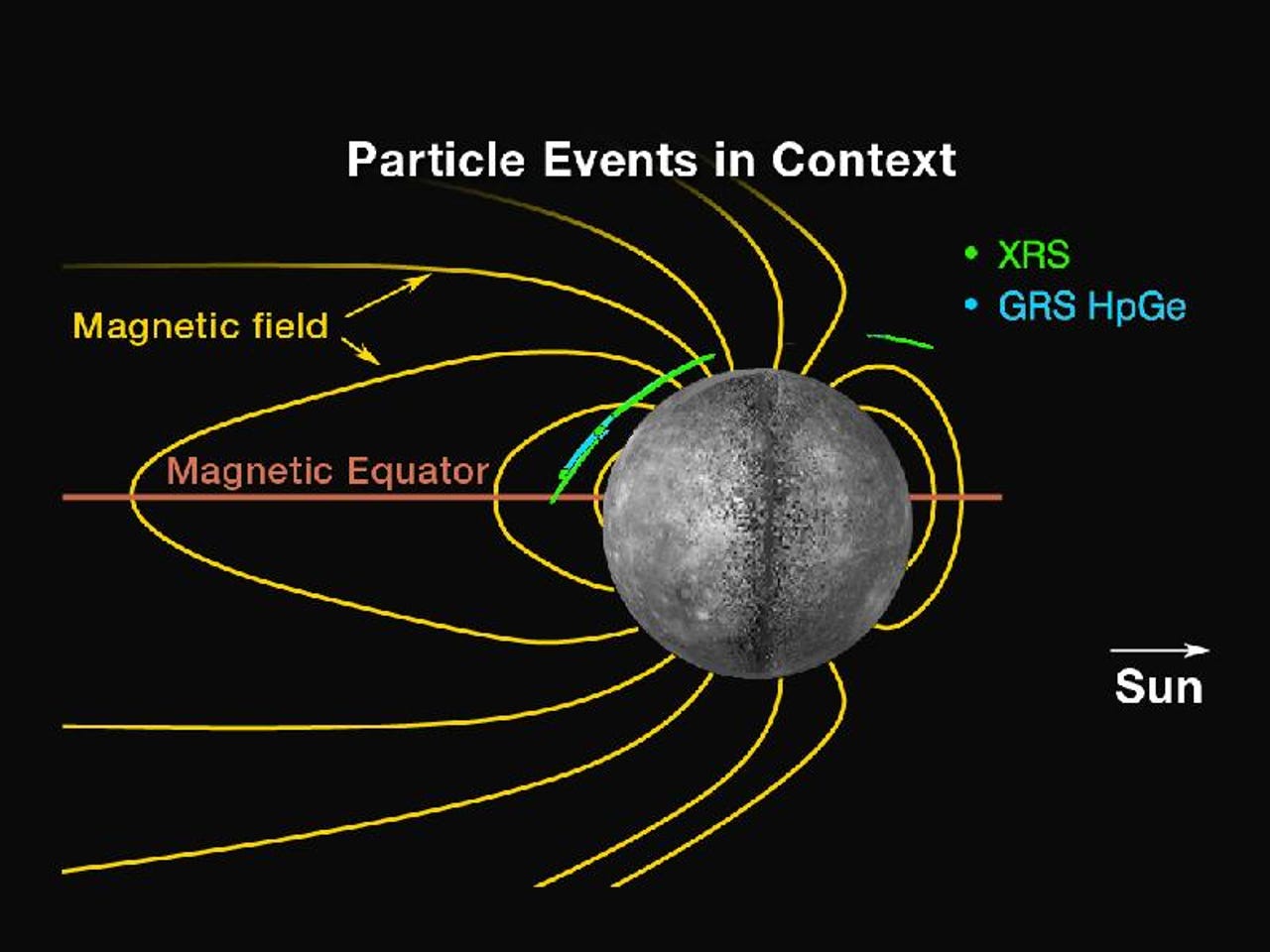Gallery: Messenger snaps Mercury in new detail

NASA uncovered more details of the first rock from the sun aka Mercury from its orbiting space laboratory called Messenger. Messenger has been sending tens of thousands of high detail images of the planet's surface from orbit for the past three months. Here are some of the findings. For more, read Larry Dignan's post on SmartPlanet.
Here, the crater Degas shows impact melt which coats its floor, and as the melt cooled and shrank, it formed the cracks observed across the crater. .
Image Credit: NASA/Johns Hopkins University Applied Physics Laboratory/Carnegie Institution of Washington
Major-element composition of Mercury's surface materials, depicted on the same graph, as measured by the Messenger XRS. Mercury has lower Al/Si and higher Mg/Si than typical lunar surface materials and terrestrial basalts, indicating a lower fraction of the common mineral plagioclase feldspar.
Image Credit: NASA/Johns Hopkins University Applied Physics Laboratory/Carnegie Institution of Washington
NASA explains: "As a result of the north-south asymmetry in Mercury's internal magnetic field, the geometry of magnetic field lines is different in Mercury's north and south polar regions. In particular, the magnetic "polar cap" where field lines are open to the interplanetary medium is much larger near the south pole. This geometry implies that the south polar region is much more exposed than in the north to charged particles heated and accelerated by solar wind–magnetosphere interactions. The impact of those charged particles onto Mercury's surface contributes both to the generation of the planet's tenuous atmosphere and to the "space weathering" of surface materials, both of which should have a north-south asymmetry given the different magnetic field configurations at the two poles."
Image Credit: NASA/Johns Hopkins University Applied Physics Laboratory/Carnegie Institution of Washington

NASA explains: "A cross-section of Mercury’s magnetosphere (in the noon-midnight plane, i.e., the plane containing the planet-Sun line and Mercury’s spin axis) provides context for the energetic electron events observed to date with the MESSENGER XRS and GRS high-purity germanium (HpGe) detectors. The Sun is toward the right; dark yellow lines indicate representative magnetic field lines. Blue and green lines trace the regions along MESSENGER's orbit from April 2 to April 10 during which energetic electrons were detected and MESSENGER's orbit was within ± 5° of the noon-midnight plane. The presence of events on the dayside, their lack in the southern hemisphere, and their frequency of occurrence at middle northern latitudes over all longitudes point to a more complex picture of magnetospheric activity than found at Earth."
Image Credit: NASA/Johns Hopkins University Applied Physics Laboratory/Carnegie Institution of Washington
Messenger's new imgages shows the north polar region is is currently filling in coverage of Mercury’s north polar region contains plains that are among the largest expanses of volcanic deposits on Mercury, with thicknesses of several kilometers in many places. Mariner 10 and Messenger flyby images indicated that smooth plains were likely important in Mercury’s northernmost regions. The estimated extent of these plains is outlined in yellow.
Click on image to enlarge.
Credit: NASA/The Johns Hopkins University Applied Physics Laboratory/Carnegie Institution of Washington
The first set of images taken by Messenger and Mariner 10 during their flybys covered 98 percent of the planet's surface but much of it was out of focus, suffered from bad lighting or was seen at disadvantageous angles.
Credit: NASA/The Johns Hopkins University Applied Physics Laboratory/Carnegie Institution of Washington
The new images taken by Messenger while orbiting the planet reveal a new level of detail. This region shows evidence for a volcanic origin including several examples of “ghost” craters or preexisting craters that were buried by the emplacement of the plains. Check out the center.
Click on image to enlarge.
Credit: NASA/The Johns Hopkins University Applied Physics Laboratory/Carnegie Institution of Washington
The northern plains are seen here to be distinctive in color and thus composition from the surrounding terrain.
Credit: NASA/The Johns Hopkins University Applied Physics Laboratory/Carnegie Institution of Washington
In the northern hemisphere of Mercury, this impact crater circled in red hosts an area of polar deposits and was profiled several times.
Credit: NASA/The Johns Hopkins University Applied Physics Laboratory/Carnegie Institution of Washington